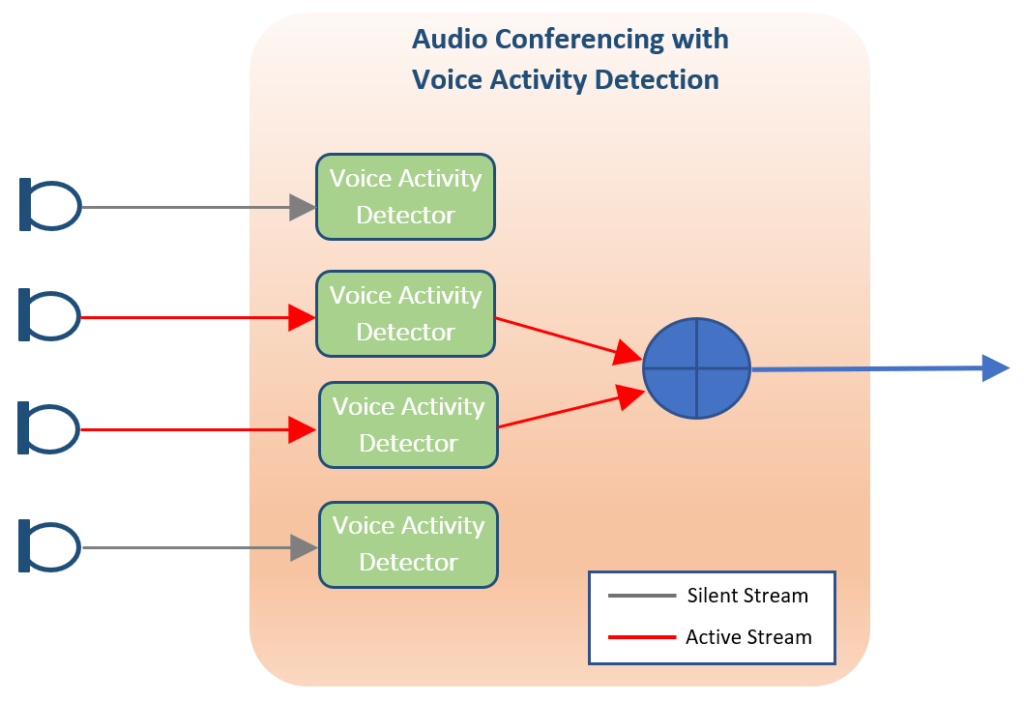Audio Conferencing is the combination of multiple audio streams into a single stream for a given destination. An audio conferencing bridge can be configured to have multiple destinations, which receive a different combination of sources.
When the number of input sources is low, one can simply add the input sources together. Once the number of sources becomes too high, the conferencing output can become noisy and saturated. The audio quality will only be as good as the worst audio source. Therefore, it is critical to include control logic as part of the conferencing system. Each channel needs to be evaluated to determine if there is any meaningful information in the audio stream.
For professional audio systems, a Voice Activity Detector / Silence Detector can be used to discriminate channels in silence. The conferencing software will only combine the active streams. For VoIP systems with DTX/CNG, only the channels receiving RTP data streams need to be included. The CNG audio can be ignored. Similarly, for ED-137 Radio Applications, only the radio channels that have PTT active need to be included in the conferencing output.
VOCAL has developed a wide variety of IP based conferencing solutions. This experience allows us to provide software to our customers that exceed their requirements and expectations. Please contact us to learn more.
